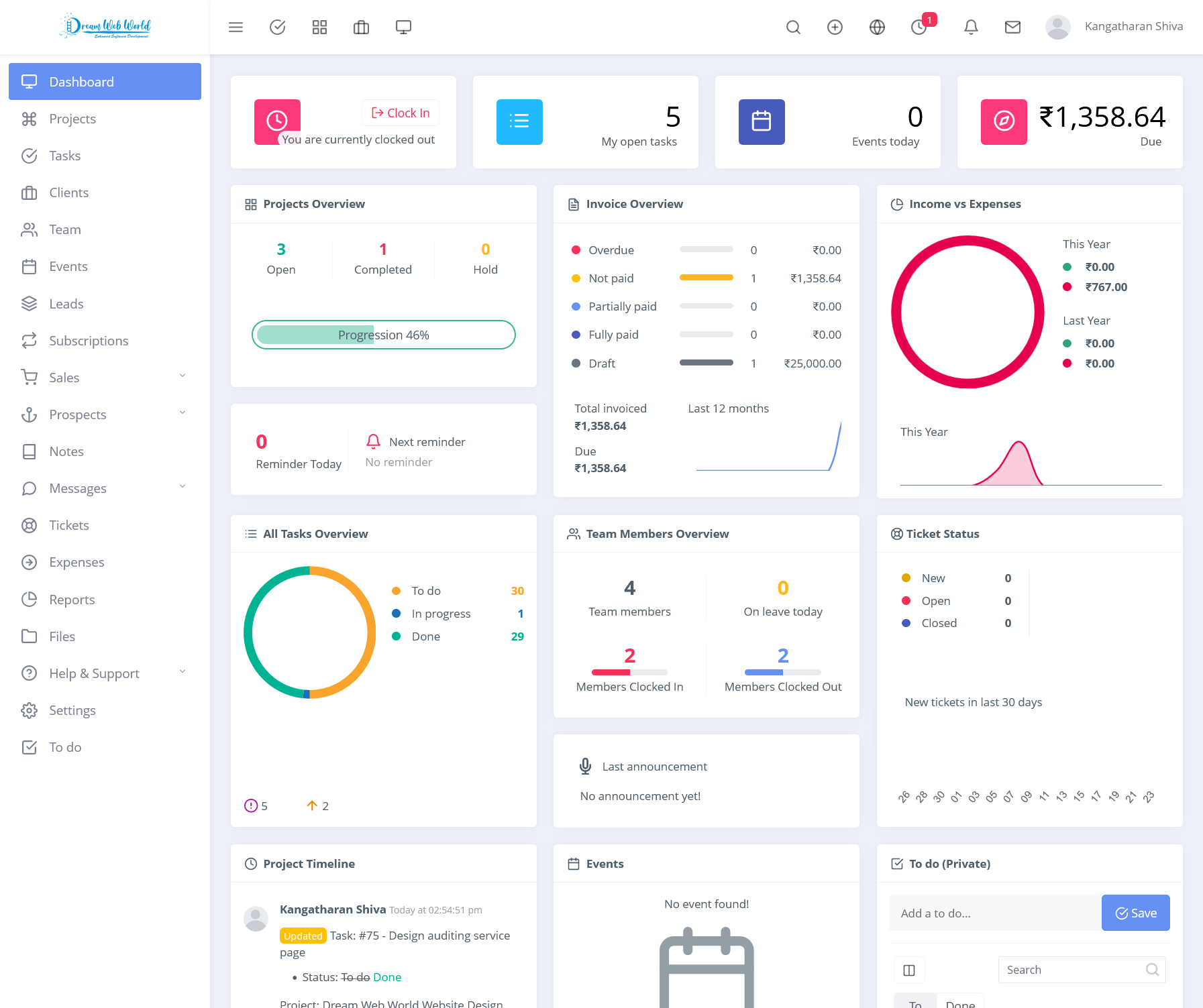Subtotal $0.00

The Project Workflow Status refers to the current state or stage of progress of a project within its overall timeline. It provides an overview of where the project stands at a given moment, including key milestones achieved, tasks completed, and any issues or challenges encountered. This status is often communicated through project management tools, reports, or meetings to keep stakeholders informed and to ensure alignment with project goals and objectives.
A Project Workflow Status typically includes several key components that provide a comprehensive view of the project’s current state, progress, and future outlook. These components help stakeholders understand where the project stands and what actions may be needed to keep it on track.
Key components of a Project Workflow Status description may include:
Backend
PHP (using CodeIgniter framework)Front-end
HTML5, CSS3, JavaScript, jQuery, Ajax (with Bootstrap for responsive design)Database
MySQLThe key features of project workflow states encompass various aspects that are essential for managing and monitoring the progress of a project effectively. These features help in understanding where the project stands at any given time and facilitate decision-making to ensure successful project completion. Here are the key features:
Identifying and managing dependencies between tasks or activities ensures that work proceeds smoothly without bottlenecks. Dependencies can be sequential (one task must be completed before another starts) or concurrent (tasks that can be performed simultaneously).
Time management involves scheduling tasks, setting timelines, and monitoring progress against deadlines. It ensures that the project stays on track and deadlines are met.
Ensuring that project deliverables meet quality standards and requirements is crucial for customer satisfaction and project success. Quality assurance involves establishing processes to verify and validate deliverables, while quality control involves monitoring project outputs to identify and correct defects.
Regularly tracking project progress against milestones and objectives provides visibility into project performance. Progress reports summarize achievements, challenges, and upcoming activities, enabling stakeholders to stay informed and make informed decisions.
Documenting project information, decisions, and lessons learned ensures that knowledge is captured and can be shared across the organization. It supports continuous improvement and future project planning.
Efficient task and activity management is crucial for tracking progress. This includes defining tasks, assigning responsibilities, setting deadlines, and monitoring task completion.
Allocating resources such as budget, personnel, equipment, and materials effectively ensures that project tasks are completed on time and within budget constraints. Resource management involves balancing resource availability with project demands.
Identifying, assessing, and mitigating risks is essential to minimize potential disruptions to the project. Risk management involves proactive planning and contingency measures to address unforeseen events.
Effective communication among team members, stakeholders, and project managers facilitates coordination and alignment of efforts. Collaboration tools and platforms support information sharing, decision-making, and resolving issues promptly.
Managing changes to project scope, requirements, or objectives involves assessing impacts, evaluating alternatives, and obtaining approvals. Change management ensures that changes are controlled and implemented effectively to minimize disruptions.
Closing out a project involves completing final deliverables, obtaining client acceptance, and transitioning resources. Evaluation includes assessing project success against objectives, identifying lessons learned, and documenting recommendations for future projects.